Opinion
Solution to water deficit in NWP and NCP
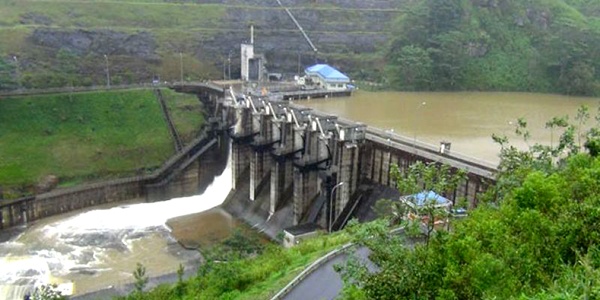
by BANDULA KENDARAGAMA
Former Section Engineer (Dam), Kothmale Hydro-Power Project and International Dams Consultant, Melbourne, Australia
(Based on an interview with Srilal D. Perera (Construction Project Manager), Melbourne, Australia)
Sri Lanka is now a middle-income country with consistently high economic growth over the recent years. The government’s public investment plans include several development plans and projects for the coming years, to further accelerate economic growth and promote social and human development.
Being a tropical island located close to the equator, Sri Lanka is highly susceptible to adverse effects of climate change. The Global Climate Risk Index (CRI) 2018, which indicates how countries have been affected by the impacts of weather-related loss events (storms, floods, earthquakes, heat waves etc.,) ranks Sri Lanka as the fourth among the most affected countries of the world. This is an alarming situation. Adverse effects of climate change are evident from the severe and long duration droughts as well as severe flooding occurring almost every year in several parts of the country. Water availability is becoming more variable and uncertain, even as demand for bulk water supplies for agriculture, new industries and tourism and clean water for drinking increases. Studies confirm that these impacts are likely to exacerbate, and the wetter areas of the country would eventually become wetter, and the drier areas drier and drier.
The government of Sri Lanka has taken steps to address these challenges with the successful completion and commissioning of Moragahakanda and Kalu Ganga reservoirs, and the ongoing and planned construction of dams and associated feeder canals, hydraulic facilities, Hydro Power enhancements to comply with Paris Convention that His Excellency the President of Sri Lanka has consented under renewable energy promotion in Sri Lanka; as well as, other water resources development investments envisaged under the Public Investment Plan (PIP). The Government is also implementing several other programs and investments to mitigate flooding and flood damages in several river basins which are vulnerable to flooding.
Planning and investments in additional water storages, and transfer infrastructure to transfer water from water surplus river basins of the wet zone to water deficit river basins, will be a major priority to meet the growing demands and challenges of climate change impacts. Additional investments will be required on a priority basis for developing water resources to provide potable water supplies to people and areas currently affected by chronic kidney disease.
These new investments on water resources will demand diligent planning, protection, management and allocation of water for multiple uses and users within river basin context. As the water infrastructure expands through additional infrastructure bringing water to water deficit geographic areas, to new and current groups of farmers, large and small industries, urban and rural drinking water consumers, mechanisms will be required for diligent planning, allocation, and monitoring of bulk water supplies from the major water conveyance systems beyond the mandate and the role played by the existing Water Management Secretariat (WMS) of the Mahaweli Authority of Sri Lanka (MASL).
The Project
With the present climatic uncertainty, North Western Province (NWP) and the North Central Province (NCP) are among the most affected areas without reliable supply of water for irrigation, about 40,000 ha, and ensuring domestic water supply to families in such provinces. Major diversions of this water are supplied through the Polgolla tunnel (875 Million Cubic Meters (MCM) / Year) for both the seasons of Yala and Maha. This volume of diversion is entirely depending on the storage above the Polgolla barrage. At present only the Kotmale reservoir with 174 MCM supports to regulate this water. However, the Polgolla tunnel is functioned only with 60% of its capacity, and the tunnel has additional capacity to divert around 400 MCM / Year, if the upstream storage is available.
Therefore, a proposal for increasing the height of the Kotmale dam to increase the retention capacity by additional 250 MCM would be one of the feasible proposals to solve the water deficits in NWP and NCP. Also, the increased head and volume would boost the hydro-power generation by about 20%, once the supplementary water starts to pass through Kotmale and Ukuwela power stations.
The Kotmale Hydropower Project was one of the first projects taken up under the Accelerated Mahaweli Development Program (AMDP). It was the most upstream among those headworks in the Mahaweli river basin, and exploited the hydropower potential of Kotmale Oya, a major right bank tributary of the Mahaweli Ganga. The Kotmale dam site is at Kadadora, located about 6.6km upstream of the confluence of Kotmale Oya with Mahaweli Ganga, where the river forms a narrow and deep valley with steep banks. The powerhouse is underground and situated in the belly of the Atabage mountains, about 6.4km downstream of the Kotmale Oya – Mahaweli Ganga confluence.
The basic elements of the Kotmale Hydro-Power Project are a concrete face rockfill dam (87m high and 600m long) having the active storage capacity of 174 MCM and a tunnel system leading to 201MW power plants with outfall to the Mahaweli Ganga. The primary function is the generation of electric power. Additional benefits arise from an increase in the amount of irrigation water available at the Polgolla diversion, as well as mitigation of floods in the Gampola area as a result of the regulation of flows in the Kotmale Oya. The Project construction work commenced in 1979 and was completed in 1985, with financial assistance provided by the Government of Sweden.
The dam has been provided with basic facilities for future rising, to three alternative levels 715m, 725m and to 735m above the sea level (capacity of 370 MCM at 728m FSL). The provision for the extension of foundation from the downstream face, and the land around the reservoir rim up to 735 m elevation, have already been acquired since the beginning to enable the future upgrading.
However, the raising of Kotmale dam would be an engineering challenge and need in depth study to check the stability of the Concrete Face Rockfill Dam (CFRD), during and after construction, instrumentation, reliability of foundation and geology, supplementary grout curtain, spill gates and chute with elevated ogee (Flip bucket), added pressure head to tunnels, height of the surge shaft and power station equipment etc., Also, the heightening of the dam shall not affect the ongoing annual supply of water to NCP, as it would generate critical social problems and, therefore, the live construction method statement with the active storage of water available for downstream use would be the most practical approach.
Therefore, a comprehensive feasibility study shall be originated to find a solution for the critical water deficit in NWP and NCP, and for harnessing addition of renewable energy, considering above referred to facts at earliest possible.
The original consultant of this project was Sir William Halcrow & Partners (Halcrow Water) of the United Kingdom (UK); and Skanska (Sweden) with joint collaboration of Central Engineering Consultancy Bureau (CECB) , then local Consultant to the Mahaweli Ministry, had been involved in a preliminary feasibility study, the project design and supervisions during the first construction phase of this development in the year 1979 to 1984 period. Hence, the re-engagement of previously involved qualified consultants would be highly recommended for future studies and development, as well as the previous data, knowhow and experience that retained with them would be essential for accomplishing this challenging task.
In addition, consideration should be given to appointing a Panel of Experts from local & overseas professional bodies, who have extensive knowledge and experience in CFRDs, gates and valves, geology, geotechnical engineering, instrumentation and dam safety.
Consideration should be given to employing a minimum number of expatriate engineers and a maximum number of local engineers.
Recommendations
Following studies are needed to execute to enhance the project more feasible to meet the challenges in climate change, and the supply of more renewable hydro-energy, especially from the power plants newly built in Mahaweli Basin from the Kelani water.
1. Raising Kotmale Dam (15, 25, 30m). Note all lands are already acquired and there is no social impact;
2. Check the possibility of building dams at locations 11, 12, 14 etc., in Master Plan above Polgolla near Ginigathhena (Koladeniya, Carolina, Trapalga, Rosalla, to increase the retention above Polgolla, as the water about 1,000 MCM / Year is spilling down Polgolla during flood;
3. Enhance the capacity of Kandalama-Huruluwewa Canal to carry about 200 MCM / Year, at a rate of 10m3/second;
4. Built a new tunnel from Bowatenna Reservoir to Dambulu Oya where the capacity is 30m3/second. This would enhance the deficit of water in NWP (150 MCM / Year) and the water need in Anuradhapura;
5. Expand the capacity of power generation in Ukuwela Powerhouse adding one unit; and
6. Revisit the canal availability from Kalawewa to Nachhaduwa, Tissawewa and Basawakulana etc. via Yoda Ela.
7. A supplementary study to check the availability of water from Kelani Basin to Mahaweli Basin would further enhance this proposal.
The writer has B.Sc. Eng. (Hons), M.Eng. (Structural Engineering & Construction), MASCE, MIE Aust, CPEng NER, APEC Engineer, IntPE(Aus).
Opinion
Sri Lanka’s Foreign Policy amid Geopolitical Transformations:

1990-2024 – Part VI
(Continued from 11 April, 2025)
Sri Lanka’s Foreign Policy after the War
The domestic political context of Sri Lankan foreign policy underwent a significant shift following the end of the war in 2009. The Mahinda Rajapaksa regime that steered the war to a victorious end fanned war triumphalism in the country and used it craftily for regime stability. In contrast, a deeply melancholic atmosphere of frustration, helplessness, and defeat permeated the North. In response to the new challenges stemming from the way the war ended, Sri Lanka’s foreign policy was forced to redefine its priorities. The Sinhala nationalist clientele of the regime gave currency to anti-western rhetoric in the country in response to these challenges.
Since the end of the war, Sri Lanka’s strategic position has evolved significantly. One of the key foreign policy challenges that emerged in the wake of the conclusion of war was how to address the growing international criticism over alleged violations of International Humanitarian Law (IHL) during the final stages of the conflict, which gained traction in global diplomatic forums. Western powers, particularly the United States, Canada, Britain, and the European Union, pressured Sri Lanka to investigate alleged war crimes committed by both parties during the final phase of war. This led to a noticeable deterioration in Sri Lanka’s relations with these countries. How to respond to the US-backed resolutions at the UN Human Rights Council (UNHRC) regarding alleged IHL violations, and also to potential future resolutions against Sri Lanka at the UN Security Council, became the central concern of Sri Lanka’s post-war foreign policy. Driven by this obsession, Sri Lanka is increasingly aligning itself with powers that can provide protection against such actions and shield itself from diplomatic and economic pressures from the West.
In President Mahinda Rajapaksa’s vision of economic development, known as the ‘Five Hubs’ concept, the Indian Ocean played a central role. Each of the five hubs—Maritime, Aviation, Commercial, Energy, and Knowledge—had a direct foreign policy dimension. However, there was no concrete plan or program of action to materialize these policy goals. Instead, Sri Lanka’s foreign policy under Rajapaksa in the post-war period was largely preoccupied with residual issues stemming from the end of the war.
In the immediate post-war period, international pressure on Sri Lanka centered on three key issues: investigating the events of the war’s final stages amid widespread allegations of war crimes by both sides; ensuring transitional justice by identifying those responsible for violations of international humanitarian law and civilian deaths; and determining the whereabouts of missing persons, many of whom were believed to have perished in the conflict.
The international community, particularly India, urged the Sri Lankan government to implement a viable political reconstruction programme for war-affected communities in the North and East, ensuring their integration into regional and central decision-making. This call emphasiz\sed the effective devolution of power under the 13th Amendment
International stakeholders expressed their willingness to support economic rebuilding in the North and East. They emphasised the urgent need for a coordinated economic recovery programme and advocated for a comprehensive reconstruction plan to restore critical services. Additionally, they stressed the importance of community involvement, ensuring that those most affected by the conflict actively participated in shaping and implementing the recovery efforts.
The issue of transitional justice and accountability emerged soon after UN Secretary-General Ban Ki-moon visited the country at the invitation of President Mahinda Rajapaksa on May 23, 2009, five days after the Sri Lankan government officially declared the war over. In the joint statement issued following the visit Sri Lanka reiterated its strong commitment to promoting and protecting human rights in accordance with international standards and emphasised the importance of an accountability process to address violations of international humanitarian and human rights law. The Secretary-General expressed hope that the Sri Lankan government would take measures to address these grievances.
After Ban Ki-moon’s visit, international pressure mounted for the establishment of a transitional justice mechanism. The Sinhala nationalist clientele of the government was of the view that Sri Lanka is a sovereign and independent country and no one has a right to interfere in its domestic affairs of the country. Initially, the UNHRC was tolerant toward Sri Lanka and willing to allow time and space for the country to develop its own mechanism to address transitional justice issues. This is evident in the resolution adopted at the eleventh Special Session of the UN Human Rights Council on May 27, 2009 (A/HRC/S11/L.1/Rev), which commended the Sri Lankan government’s efforts to address the urgent needs of internally displaced persons and welcomed its continued commitment to promoting and protecting human rights (Amal Jayawardane, 2025, p. 144). In response to the growing international concerns over the issue of accountability and transitional justice, President Mahinda Rajapaksa appointed the Commission of Inquiry on Lessons Learned and Reconciliation, as a domestic initiative, on May 15th, 2010.
To the dismay of the Sri Lankan government, UN Secretary-General Ban Ki-moon appointed a three-member Panel of Experts on June 23, 2010. The panel, chaired by MarzukiDarusman and consisting of YasminSooka and Steven Rattner, was tasked with advising the Secretary-General on issues of accountability regarding alleged violations of international human rights and humanitarian law during the final stages of the Sri Lankan civil war. The Sri Lankan government strongly rejected this move, calling it both unnecessary and unwarranted.
Initially, the LLRC seemed like a hasty response to Western pressures and received a lukewarm reception. However, the LLRC took its mandate seriously and presented its final report on November 15, 2011. The report offered significant observations and recommendations concerning the origins of the conflict, restitution, and other efforts toward national reconciliation. It emphasized that “the root cause of the ethnic conflict in Sri Lanka lies in the failure of successive governments to address the genuine grievances of the Tamil people” and stressed that “a political solution is imperative to address the causes of the conflict” (The LLRC Report, 2021).
Regarding the issue of accountability, the LLRC noted that “eyewitness accounts and other available materials indicate that significant civilian casualties occurred during the final phase of the conflict.” It recommended that “action be taken to investigate the specific instances mentioned in the observation. If investigations reveal any offenses, appropriate legal action should be taken to prosecute or punish those responsible.”
In March 2012, the UN Human Rights Council (UNHRC) adopted Resolution A/HRC/19/L.20, titled Promoting Reconciliation and Accountability in Sri Lanka, urging the Sri Lankan government to adopt the LLRC’s constructive recommendations and take “all necessary additional steps to fulfill its legal obligations.” However, dismissive stance of the Sri Lankan government toward international IR bodies was clearly illustrated by the manner in which UN Human Rights Commissioner Navi Pillay’ visit to Sri Lanka in August 2013 was handled. Later that year, during its 22nd session, the UNHRC adopted another resolution calling on the Office of the High Commissioner to enhance its monitoring and reporting on Sri Lanka’s human rights situation, as well as the progress on reconciliation and accountability. This resolution required the Office to provide an oral update at the Council’s 48th session, a written update at its 49th session, and a comprehensive report at its 51st session, including further options for advancing accountability.
In response to growing international pressure, the Sri Lankan government appointed the Maxwell Paranagama Commission (Presidential Commission to Investigate Complaints of Missing Persons – PCICMP) in August 2013. The commission was tasked with investigating the disappearances of civilians in northern and eastern Sri Lanka between 1983 and 2009. However, the establishment of both the Paranagama and Udulagama commissions did little to quell international concerns. The failure of the Mahinda Rajapaksa government to address the issue of accountability became apparent in the March 2014 UNHRC resolution, which called on the Office of the High Commissioner for Human Rights (OHCHR) to investigate the allegations in order to prevent impunity and ensure accountability.
India appeared less focused on advocating for transitional justice and accountability in international forums and, instead, prioritized the political empowerment of minorities, particularly in the North and East of Sri Lanka. Alongside this, India emphasized efforts toward economic reconstruction and national reconciliation, aiming to foster stability and long-term peace.
Full implementation of the 13th Amendment became an international concern in the post-war context. In the last stage of the war, the Sri Lankan government has repeatedly assured the international community that “Sri Lanka will take measures for the effective implementation of the 13th Amendment to the Constitution” (Human Rights Council, 2008). Sri Lanka continued to assure the international community of its intention to offer a devolution package built on the 13th amendment to the constitution after 2009. India raised this issue in several bi-lateral diplomatic encounters. Most important is assurances given to India in this regard by Sri Lanka.
While the post-war Mahinda Rajapaksa regime faced tensions with Western powers and India, it leaned toward China, reshaping Sri Lanka’s geostrategic position in the early post-war years. Sri Lanka has maintained cordial relations with China since the early 1950s while balancing its ties with other major powers, namely India and the United States. However, after 2009, its foreign policy took a different turn, leaning more toward China at the expense of the traditional balance it had carefully maintained. This shift has had significant implications, particularly in the context of evolving regional and global geopolitical dynamics.
(To be continued)
by Gamini Keerawella
Opinion
End of an Era: Passing away of Raja Uncle (Mr. Rajapaksha)

1935 – 2025
With heavy hearts, we share the passing of our dear neighbor, mentor, and cherished friend, Raja Uncle — known formally as Mr. Rajapaksha — who passed away peacefully on April 1, 2025, at the age of 89.
For over 50 he was a constant and beloved presence in our community — someone whose actions spoke louder than words, and whose kindness left a mark on every life he touched. Gentle in spirit, firm in values, and endlessly thoughtful, he helped shape the heart of Bogahawatta with his humility, quiet strength, and unwavering dedication.
He carried himself with grace and dignity — slim, well-groomed, and strikingly handsome, with a calm confidence that made people feel at ease. He never tried to be a person who gave orders — instead, he led through respect, active listening, and thoughtful action. His leadership was never loud — it was steady, consistent, and deeply human.
A founding member of the Bogahawatta Welfare Society, Raja Uncle gave more than 40 years of devoted service to the betterment of the Bogahawatta community. In the 1980s, as the area grew and safety became a concern, he established the neighborhood watch, restoring trust and unity in a time of change.
He organized road cleaning and repair efforts, worked alongside neighbors, and played a vital role in the construction of the Bogahawatta Welfare Society headquarters, which stands today as a symbol of unity and progress.
He also cared deeply for everyday needs. For nearly 20 years, before running water was available, the community well was a lifeline. When it fell into disrepair, Raja Uncle would quietly take the responsibility to clean and maintain it, asking for no recognition. I had the honor of helping him at times, and I saw the pride and purpose behind every quiet act.
When I served as president of the local youth society, he became my mentor. With his help, we organized a talent show, community art exhibition, built a mini library, and gave young people opportunities to lead. His daughter Tharanga, the society’s secretary, worked beside him — a reflection of the values he passed on.
He also shaped my personal journey. He introduced me to a temple, and gently guided me toward a spiritual life I still hold close today.
He was our protector. If a stranger walked down our lane, he would calmly and respectfully inquire about their purpose, ensuring the safety of every home and child. During a heated argument in my youth, he stood nearby for over an hour, silently watching until it ended, and then walked me home. He didn’t lecture. He didn’t judge. He simply cared.
Every April, without fail, he was the Master of Ceremonies at the Sinhala and Tamil New Year festival. His voice, his presence, and his joyful warmth brought the entire community together in celebration year after year.
In times of sorrow, he led with compassion. He would gather neighbors to visit grieving families, sometimes traveling great distances, and delivered eloquent eulogies that offered comfort and honored lives with dignity.
What truly set Raja Uncle apart was his love — especially the remarkable bond he shared with his wife. Their marriage was the most loving I have ever witnessed. They were the love of each other’s lives — gentle, respectful, and unwavering. He never raised his voice. They never let conflict come between them. Their partnership was built on trust, affection, and shared values.
In July 1980, as public servants, the two of them stood together in protest against unjust government layoffs. They both lost their jobs, but they stood by their beliefs. They started a business together, overcame hardship side by side, and were eventually reinstated. In time, Mrs. Rajapaksha rose to a top-level position in Sri Lanka’s Department of Immigration and Emigration — a testament to her brilliance and their shared resilience.
They raised their children in a home of dignity and purpose. In a country where less than five percent were admitted to university at the time, all three — Tharanga, Lahiru, and Lasitha — were accepted. A rare and proud achievement rooted in hard work and love.
His family grew across the world — Lasitha became a British citizen, and Lahiru a citizen of Australia. Raja Uncle visited them often, maintaining the same closeness and warmth across any distance.
And perhaps the most remarkable of all: he helped lead a place that was once a quiet, forested area in the 1970s into a thriving, respected neighborhood — one so valued that even a Defense Secretary of Sri Lanka chose to make it his home. This was not the work of ambition, but of vision and service — built slowly, over decades, through trust and integrity.
To me, as his next-door neighbor, he was one of the most steady and trusted influences in my life. He showed me that a meaningful life isn’t defined by what we achieve — but by how we treat others, what we give, and how we listen. I shaped my life after him.
Although I haven’t been as closely associated with him since leaving Sri Lanka in 2000 and becoming a citizen of the United States, his memory has remained with me every step of the way. These are just a few of the memories I carry — as much as I can recall. I still wish, from the bottom of my heart, that he could be my neighbor forever — to guide me, to listen, to share his quiet vision.
He touched so many lives, across generations. There are countless stories, small and great, that live on in the hearts of those who knew him. His presence will be remembered not only through words, but in the community he shaped, the values he carried, and the lives he quietly uplifted over these 50+ years.
May his soul rest in peace, and may we carry forward the spirit he lived by — humility, strength, compassion, and quiet dedication — just as Raja Uncle did, every single day of his extraordinary life.
Opinion
Some aspects of China’s development model
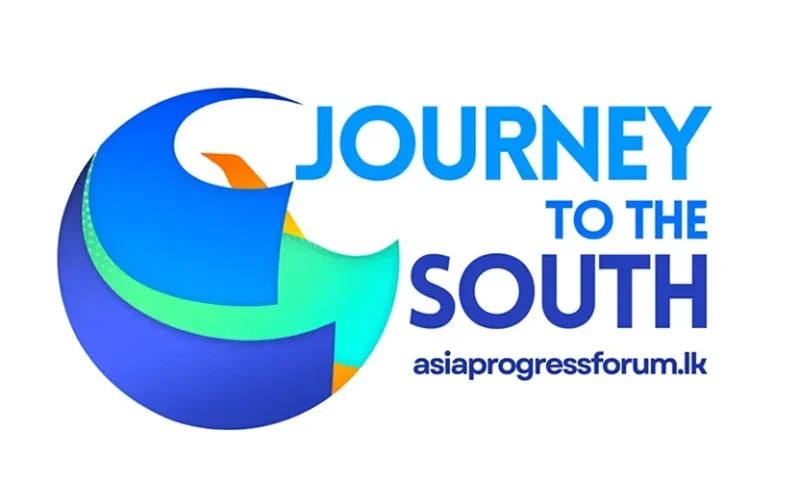
by Shiran Illanperuma
China’s rapid development over the last few decades has been the source of much debate among economists. Some claim China as the model par excellence of market liberalisation and the superiority of private sector driven growth. Others equally argue that China’s model is one of planning and state intervention.
On 28 March, I was invited by Nexus Research to deliver a presentation on China’s development model alongside former Ambassador to China Dr. Palitha Kohona. Unfortunately, the contents of this presentation have been misreported in an article in the Island published on 4 April (Dr Kohona: developing countries should covet China model). The article claimed that my presentation touched on “low-cost labour, foreign direct investments, and global trade agreements”. In fact, such simplistic tropes were precisely what I had intended to counter.
China’s development model challenges many of the axioms of neoclassical economics. If low-cost labour were the decisive factor for take-off, then investment should be pouring into much-cheaper labour markets in sub-Saharan Africa. On the contrary, rising wages in China have not led to the outflow of capital one would expect under such a model. This is because the advantage China offers is a healthy and skilled workforce (relative to price) and an infrastructural system that keeps non-wage operating costs (such as transport and energy) low. This, combined with a domestic value chain, is China’s main strength and why economic growth has been combined with rising wages and standards of living.
While foreign direct investment (FDI) has been a huge part of China’s success story, it is possible to overstate their importance. First, FDIs only really took off from the 1990s onwards, yet to begin there would be to ignore the decades of work done to develop the country’s agricultural self-sufficiency, basic industrial system, and institutional structure. Second, what has mattered for China is the quality of FDI, which is determined by government policy. By the standards of the OECD Foreign Direct Investment Regulatory Restrictiveness Index, China remains fairly selective on what FDI is allowed and encouraged. FDI is promoted not as an end in itself but as a means to acquire technology that should be transferred to national champions.
Role of Local Government
A significant portion of my presentation for Nexus Research was on the role of local governments economic policy – something that is often neglected (though there is a growing literature on the subject). China has a fairly decentralised system of governance, a product of its vast size and geography, as well as the institutional changes and experiments in direct democracy during the period of the Cultural Revolution.
Chinese economist Xiaohuan Lan, in his book How China Works (2024), has said that “In China, it is impossible to understand the economy without understanding the government.” While the central government in China formulates indicative plans and the overall goals and trajectory for development, implementation of these plans is delegated to local governments. Local governments have a broad remit to interpret these plans, experiment with implementation, and compete with each other for investment. This leads to a much more dynamic and decentralised development process that encourages grassroots participation.
A comparison between China and India on the share of public employment at different levels of government is very revealing. For China, over 60% of public employment is at the level of local government, with federal and state governments comprising less than 40% of employment. In contrast, less than 20% of Indian public employment is in local government. India, therefore, despite its much-touted linguistic federal system, is far more centralised than China. The weakness of Indian local governments remains a significant barrier for its development.
The Role of SOEs
State-owned enterprises (SOEs) are the elephant in the room when it comes to China’s development model. Chinese political scientist Prof. Zheng Yongnian said in 2011 that “the state sector is in fact important for China’s macroeconomic stability.” This is a radically different approach from neoclassical economics, which views macroeconomic policy purely through the lens of fiscal and monetary policy.
Broadly speaking, SOEs in China perform four ‘macroeconomic’ functions. First, they conduct the low-cost production of upstream inputs such as metals, chemicals, and rare earth minerals. Second, they manage essential commodity reserves and intervene in commodity markets to stabilise prices. Third, they engage in countercyclical spending on public works during economic downturns. Fourth, they are deployed to respond during emergencies and external shocks such as the 2008 Sichuan earthquake and the COVID-19 pandemic. The through line in these functions is to keep costs low and smoothen out business and commodity cycles. This is why China has not yet faced a recession comparable to many capitalist economies.
As a consequence of this model, SOEs remain a significantly large part of the Chinese economy in quantitative terms. According to data compiled by the Peterson Institute for International Economics, SOEs accounted for around 75% of the aggregate revenue of Chinese firms in the Fortune 500. While it is true these firms are often not as profitable as the private sector, this is by design, as they pass on low prices to domestic manufacturers.
China has entities such as the State-owned Assets Supervision and Administration Commission of the State Council (SASAC) which facilitate the centralised governance and oversight of SOEs. This model is crucially different from the Temasek model often discussed in Sri Lanka. Under Temasek, SOEs are almost entirely market-oriented and depoliticised. This is not the case in China, where SOEs continue to play crucial social and political functions.
The Role of Competition
What confuses most observers of China is the fact that it very obviously has a fiercely competitive and dynamic private sector. How then to reconcile the preceding elaboration of the role of local government and SOEs with a competitive private sector? Local governments and SOEs provide the basic institutional framework and economic building blocks for the private sector to play its role in capital accumulation and innovation.
The competitive cycle in China could be broadly divided into four phases. In the first phase, incentives created by the central and local governments lead to a flood of investment in desired sectors and sub-sectors, resulting in the establishment of new firms and production capacity. In phase two, these incentives are eased, leading to fierce competition and survival of only the fittest firms. In phase three, once the market has reached a stage resembling monopoly, one of three tactics may be used: 1. Firms are forced to compete internationally and export; 2. monopoly firms are broken up by the state; or 3. monopoly firms are nationalised or brought under stronger state supervision. The system is designed to resist the market’s natural tendency towards monopolisation.
Political Leadership
The Chinese state has an exceptional ability to maintain what political sociologist Peter B. Evans calls ‘embedded autonomy’. It is close enough to the private sector to understand economic conditions and formulate policy but politically independent enough from capital to resist capture by private interests. This is a key difference between China’s development model and the developmentalism of East Asian states such as Japan and South Korea, where large private firms (zaibatsu in the former, chaebols in the latter) dominate political life.
China’s development model cannot be understood in isolation of its leadership system. The Communist Party of China, which has around 100 million members (almost five times the population of Sri Lanka!), has been key to the process of China’s development. The party remains committed to developing Marxist-Leninist philosophy and applying it to the country’s concrete conditions. It retains deep roots in all levels of Chinese society, engaging in consultation during the policymaking process.
To what extent China’s model can be replicated by other countries is an open question. While the CPC has often invited academics and political parties to study its system, this does not equate to the party attempting to export said system. There is no real ‘Beijing consensus’ that is equivalent to the ‘Washington consensus’. On the contrary, President Xi Jinping, in 2023, cautioned that modernisation “cannot be realised by a cookie-cutter approach”.
“For any country to achieve modernisation, it needs not only to follow the general laws governing the process but, more importantly, consider its own national conditions and unique features.”
(Shiran Illanperuma is a researcher at Tricontinental: Institute for Social Research and a co-editor of Wenhua Zongheng: A Journal of Contemporary Chinese Thought. He is also a co-convenor of the Asia Progress Forum which can be contacted at asiaprogressforum@gmail.com)
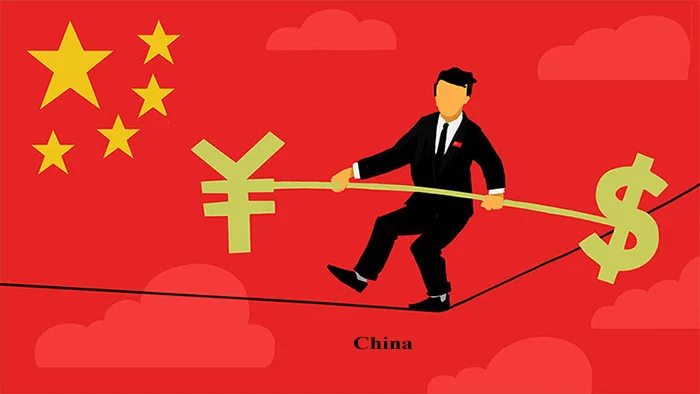
-

 News5 days ago
News5 days agoSuspect injured in police shooting hospitalised
-

 Features6 days ago
Features6 days agoRobbers and Wreckers
-

 Business6 days ago
Business6 days agoBhathiya Bulumulla – The Man I Knew
-

 Business5 days ago
Business5 days agoSanjiv Hulugalle appointed CEO and General Manager of Cinnamon Life at City of Dreams Sri Lanka
-

 Features4 days ago
Features4 days agoLiberation Day tariffs chaos could cause permanent damage to US economy, amid global tensions
-
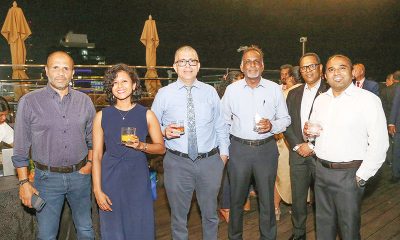
 Business4 days ago
Business4 days agoMembers’ Night of the Sri Lanka – Russia Business Council of The Ceylon Chamber of Commerce
-
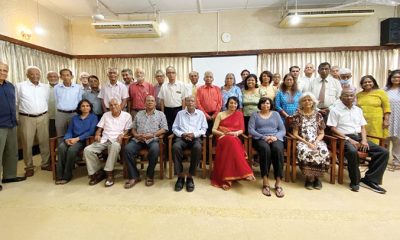
 Features4 days ago
Features4 days agoMinds and Memories picturing 65 years of Sri Lankan Politics and Society
-

 News5 days ago
News5 days agoLankan security forces Humanitarian Assistance and Relief Team working in Myanmar












